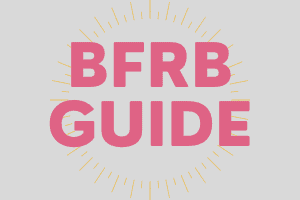Quick Guide for Body-Focused Repetitive Behaviors
I’ve been pulling my eyelashes and eyebrows since I was nine years old. I finally started going to therapy last July for hair pulling and some other issues. I’ve learned a lot, and I’ve had my ups and downs. In this journey, I’ve read a lot about BFRBs, and I’d like to share that with you. I wanted to write a quick guide/resource page that can answer some common questions. And to give you a place to get started.
What are Body-Focused Repetitive Behaviors?
Body-Focused Repetitive Behaviors (BFRBs) are over-grooming behaviors such as hair pulling(trichotillomania), skin picking(dermatillomania), biting, and chewing, etc. The behaviors are very hard to stop and can cause considerable damage. There are different therapies that people can go to, and they can be successful in stopping or decreasing. Treatment can vary from person to person, depending upon their needs. I’ll go into more detail below about different therapies.
What are the different types of BFRBs?
There are many different types of BFRBs. The two main ones listed in the DSM-5 under Obsessive-Compulsive and related disorders are trichotillomania and excoriation. Trichotillomania is a hair pulling disorder, and excoriation is a skin picking disorder. Excoriation is also known as dermatillomania. All three of the names(excoriation, skin picking, and dermatillomania) can be used interchangeably. Here’s a list and short description of other BFRBs:
- Trichophagia-hair eating.
- Dermatophagia- compulsively chewing, biting, or eating of one’s skin.
- Onychophagia- compulsively biting one’s fingernails.
- Onychotillomania-compulsive nail picking.
- Trichoteiromania- compulsive hair cutting.
- Cheek biting(Morsicatio Buccarum)- compulsively chewing/biting the cheeks.
- Tongue chewing(Morsicatio Linguarum)-compulsively chewing the tongue.
- Rhinotillexomania-compulsive nose picking.
- Eye Mucus Fishing-compulsively searching for mucus in the eyes.
How do you treat BFRBs?
There are different types of therapies that can help people with BFRBs. Some of them are now combined to better help the person. For example, Habit Reversal Therapy, Cognitive Behavioral Therapy, and/or Acceptance and Commitment Therapy can be used. While searching for a therapist, you can always ask beforehand if they treat patients with BFRBs. The TLC Foundation has a search engine to help find providers that are trained to treat BFRBs.
Common Questions/FAQ About BFRBs
- What causes BFRBs?
- There’s not an exact answer. For some, there isn’t a reason, it just happens. For others, it can be trauma or stress-related. Researchers have found that having a BFRB could be hereditary.
- Are BFRBs self-harm?
- Short answer: no. Here’s a link from the Canadian BFRB Support Network about why BFRBs are not self-harm.
- Is there a medication I can take?
- There isn’t a specific medication for BFRBs. Medical professionals might prescribe a medication, but it may or may not work. Some people may have another disorder in addition to a BFRB. The medication could help the BFRB. But nothing is guaranteed.
- How do I stop pulling or picking, etc?
- Everyone is different. That’s what makes this complicated. But generally, seeing a therapist trained in how to treat BFRBs can help. Tracking where you perform your BFRB, what time, your thoughts/feelings, etc. can help you identify and see patterns. As well as using a blocker on your hand/fingers and using a blocker where you perform for your BFRB. For example, using finger covers/cots and then using a hair wrap for your hair. Also adjusting the physical area where you live, such as covering the mirror.
- Is there a cure?
- No, there isn’t a cure. But seeing a therapist can help overcome your BFRB. A medical professional may prescribe drugs to help you, but there is no drug specifically for BFRBs. There are different techniques that may work for you, but there isn’t an exact cure. Trichstop has more information.
The Last Thing You Need to Know about BFRBs
I hope this guide answered some questions you might have had. Unfortunately, there’s still a lot unknown about BFRBs. But there are researchers working on figuring out the pieces of this puzzle. That being said, therapy and a combination of different techniques can help you break your BFRB. If you want more information, check out this article that talks about the Top 3 Organizations for BFRBs.

